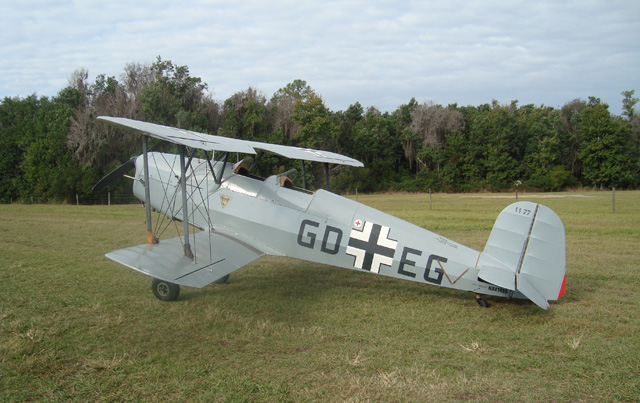
1936 Bücker Jungmann
Designed by Carl Bücker, the Jungmann—which means “young man” or “freshman” in English—was one of the finest primary aerobatic trainers ever built.
Its flying qualities are splendid, and its distinctive double swept-back wings make it a great snapping airplane. With its light weight and agility—combined with its 12g strength—it became the aircraft for primary training in the mid-thirties. It was used by the German Luftwaffe and was adopted by Switzerland, Czechoslovakia, Hungary, South Africa, and Spain before World War II. During and after the war many other countries bought or built them under license, including Yugoslavia, Brazil, Uruguay, Chile, and Japan.
The Jungmann is a simple airplane with interchangeable upper and lower wings, making them faster to manufacture and repair. Each wing panel, uncovered, weighs only 25 lbs. The resulting four ailerons contributed to its maneuverability, which came in handy to several Jungmann pilots when they found themselves surprised by British fighters over Paris. All but one escaped by making tight turns around the Eiffel Tower! At war’s end most German Jungmanns were destroyed; however, because it was such a good aircraft the Swiss Air Force used them until the early 1960s. At that time they were still being manufactured in Spain. As the Air Forces retired them, private owners collected them where they are appreciated to this very day.
Specifications
- Year Built — 1936
- Wingspan — 24’3″
- Top Speed — 106 mph
- Gross Weight — 1,500 lbs
- Engine — Hirth 4-cylinder (105 hp)
Kermit’s Comments
One interesting note about the Hirth engine is that, because of the use of roller bearings around the crankshaft, there is no oil pressure to measure; therefore, it has no oil pressure gauge.